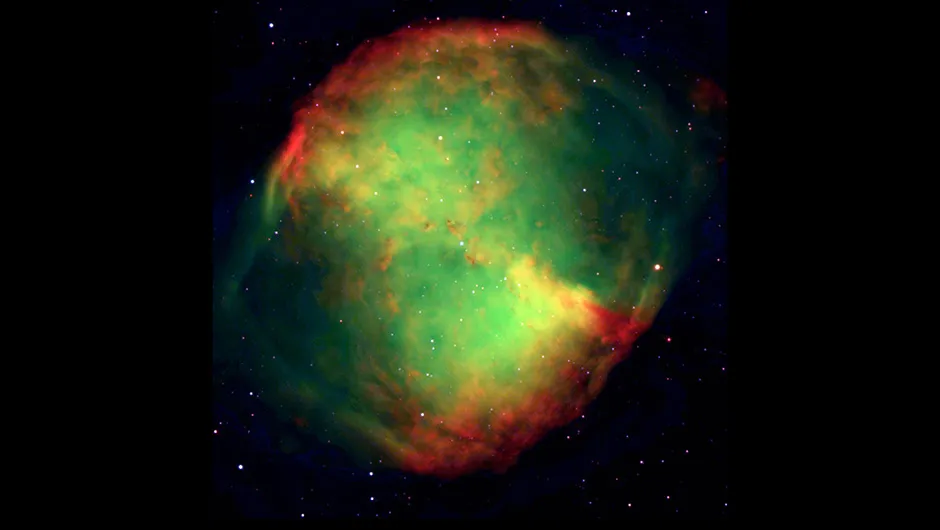The Saturn Nebula is a planetary nebula, although it has nothing to do with planetary bodies.The name of these nebulae derives from the fact that they appear mostly round and symmetrical, like planets.
The Saturn Nebula is so-called because it resembles the most iconic ringed planet in our Solar System.
In order to better understand how planetary nebulae form, astronomers used the Multi Unit Spectroscopic Explorer (MUSE) instrument on ESO’s VLT to observe NGC 7009.
These observations produced the first ever detailed optical maps of the gas and dust distributed throughout a planetary nebula.
The resulting image of the Saturn Nebula shows an elliptical inner shell, an outer shell and a halo.
But the astronomers behind the study also found a wave-like feature in the dust of the nebula, which is not yet understood.

Planetary nebulae are incredibly dusty places, as they are formed when a star begins to expand and shed its outer layers towards the end of its life.
This results in a blowout of material that glows with ultraviolet radiation from the remaining stellar core.
Dust is distributed throughout the Saturn Nebula, but there is an absence of dust at the rim of the inner shell, as though it was being destroyed.
Perhaps the expanding shock wave of the inner shell is smashing into the grains of dust and destroying them.
Or, perhaps the heat from this shock wave is simply evaporating the dust.
Studies like these provide incredible images of these cosmic structures, but also enable astronomers to get closer to the mysteries of how planetary nebulae form and evolve.
